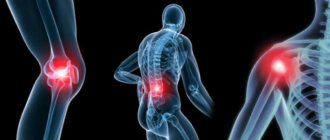Phobia (Greek phobos - fear, fear) - unreasonable fear of something, fear of something (for example, photophobia - photophobia, antrophobia - fear of people, crowds).
There are a huge number of different types of phobias. They have long been well known. Everyone knows perfectly well what claustrophobia (fear of closed spaces), agoraphobia (fear of open spaces), acrophobia (fear of heights) means. And perhaps only specialists know that graphophobia is the fear of writing; ergophobia is the fear of work, pnigophobia is the fear of being strangled, and taphephobia is the fear of being buried alive, etc. Despite the prevalence of various phobias, science still does not know exactly the mechanism of their occurrence. There are many theories about the origin of fears, but most of them are questionable.
Phobia is a painful, obsessive and unreasonable fear (a type of obsessive state) that grips a person in certain situations and causes autonomic disorders, for example, increased heartbeat and sweating. A patient suffering from certain phobias tries to avoid situations and objects that cause fear. Such people often realize that their fear is completely unfounded. For example, people who are afraid of spiders or elevators know that they are in little danger. However, despite this, they still experience panic fear. This fear usually has a negative impact on their life, sometimes making it unbearable.
Many children are afraid of the dark or animals, some are afraid of school. For preschoolers and primary schoolchildren, this phenomenon is completely normal and is not considered a phobia.
Compared to other mental disorders, phobias are quite widespread. For example, in England, almost 8% of residents suffer from various phobias. The results of studies conducted in the United States showed that almost 6% of the population are susceptible to certain fears.
Treatment
Due to the existence of various theories explaining the occurrence of fear, the therapeutic principles of treating phobias also differ.
Psychoanalytic method
From a psychoanalytic point of view, a phobia is an expression of a conflict hidden in the subconscious. In this case, they do not treat the fear itself, but try to discover the conflict that is its cause. The main means for clarifying conflicts are the interpretation of dreams and the analysis of conversations between the patient and the doctor. When the conflict can be detected, the patient comes to terms with it and the phobia disappears. Some psychoanalysts suggest that the patient consciously do what he is most afraid of and thus overcome fear.
Behavioral therapy methods
Behavioral therapy specialists have created many different techniques designed to alleviate the manifestation of fear in patients or eliminate this fear completely. A frequently used method is systemic desensitization combined with deep muscle relaxation. In this case, when the patient is completely relaxed, several situations are created that cause him fear. The principle of habituation (habituation) is used. During therapy, the patient encounters situations that cause him fear. For example, treatment for agoraphobia involves visiting places with large crowds of people. Modern data confirm that this is a fairly effective therapeutic method, which makes phobias easier to tolerate.
Another technique for teaching a patient not to be afraid of his fear is based on the principle of visualization. The patient watches a movie or observes real life scenes and realizes that the object that causes fear in him does not cause it in others. The third technique is based on gradually overcoming fear. The patient gradually, step by step, approaches the object of his fear. The patient is praised and encouraged for the slightest effort. Thus, the basic principle of all these techniques is to look for danger to ensure safety.
Medications
To alleviate an acute anxiety-phobic state, medications may be prescribed as an additional therapeutic agent. However, you cannot limit yourself to drug treatment alone. When you stop taking the medication, fear arises again.
You can learn to be afraid
A phobic reaction can be learned. If a child constantly sees his mother being terrified of spiders, then it is likely that under certain circumstances he will also develop a fear of them. A child who is constantly told that dogs are dangerous may develop a corresponding type of phobia. Praise or reproach can contribute to the formation of fear. If a child is praised for staying away from dogs and reprimanded for petting them, there is a high likelihood of developing a fear of animals.
Man is a social being - a member of society. Therefore, it is completely normal that he cares about the opinions of people around him. However, sometimes a person places too high demands on himself and cannot meet them, which contributes to the formation of phobias and complexes. Patients suffering from social phobias are often prone to one or another irrational beliefs, which become the cause of their internal tension. It is very important for them that society recognizes and loves them. They always try to be competent and behave impeccably in all life situations. However, this is impossible. As a result, a person reacts painfully to other people’s opinions, later he is overcome by a feeling of rejection, and he becomes withdrawn.
Symptoms
It is worth understanding the differences between fear, anxiety, anxiety and panic. Anxiety is not related to anything specific. “Uneasy at heart” - this is how this feeling can be explained. Anxiety accompanies a person at certain moments in life (at night, when visiting gloomy houses). Once in conditions that are comfortable for him, a person calms down. But if the patient has a fear of rain, he will not forget about his fear. Moreover, seeing rain on TV, the patient will feel a panic attack.
Read also: Lombroso's anthropological theory
The phobia can provoke panic attacks in the patient
Fear can manifest itself in different ways, the forms of its expression “vary” from minor fear to a nervous cough, nausea, and fainting. Suggestible people sometimes pick up phobias from relatives. The patient, without having a negative experience, may experience panic about botulism. His mother, who had seen her childhood friend die before her eyes, was afraid of botulinum wound poisoning. The shock was deeply ingrained in the woman’s memory, and she “infected” her son with her emotional stories.
There are a huge number of types of fear in psychology - more than 1000. Some of them hardly bother people. The most terrible phobias for the physical health and mental well-being of an individual are panic before eating, fear of time, fear of falling asleep.
Fears that are related to health
- Acnephobia is a condition in which acne is feared.
- Algophobia is a horror of pain.
- Amychophobia is cowardice that appears at the thought of damaging the skin.
- Anginophobia is a condition in which people experience fear of angina attacks.
- Ataxiophobia – when you are afraid that you will no longer control your movements.
- Bacillophobia – panic in front of pathogenic microorganisms.
- Venerophobia is a phobia of sexually transmitted diseases.
- Vertigophobia – people with this phobia fear feeling dizzy.
- Hematophobia – panic at the sight of blood.
- Germaphobia – when you fear infection.
- Hydrosophobia – there are two definitions here at the same time. People with this phobia are afraid of either catching a cold or sweating.
- Dentophobia – panic symptoms at the sight of a dentist.
- Dermatopathophobia – when you are afraid to “catch” a skin disease.
- Dinophobia is a condition in which there is a fear of dizziness.
- Cancerophobia, Oncophobia - people with this phobia are afraid of tumors.
- Cardiophobia is a state of panic at the thought of heart problems.
- Copophobia is the fear of being overtired.
- Leprophobia is a condition in which people are afraid of contracting leprosy.
- Lyssophobia is a condition in which people are afraid of going crazy.
- Maleusiophobia - when you are scared before childbirth.
- Maniophobia is the fear of going crazy.
- Menophobia is a state of panic that occurs when thinking about menstruation with pain.
- Morphinophobia - when you are afraid of becoming addicted to morphine.
- Odorntophobia is a phobia of dental treatment.
- Parasitophobia is the fear of everything related to parasites.
- Patroiophobia - when you are afraid of heredity.
- Psychophobia – nervousness in front of mentally ill people.
- Rectophobia is the fear that you will have difficulty going to the toilet.
- Syphilisophobia is the fear of contracting syphilis.
- Speedophobia is the fear of contracting AIDS.
- Scabiphobia is a phobia of scabies.
- Toxicophobia - when you are afraid of getting poisoned.
- Pharmacophobia – such people experience panic before taking medications.
- Febriphobia is cowardice in the face of fever.
- Emichophobia – trembling before scratches appear.
- Epistaxophobia - such people are very afraid of nosebleeds.
What it is?
The existence of humanity has always been associated with the need to protect against possible danger, therefore nature itself has created a safety mechanism in us that allows us to warn in time about a threat to life or health.
We are talking about the emotion of anxiety and the feeling of fear, which characterize the emotional sphere of a person at a time of real danger.
Phobias are phenomena of a different order. Here, fear is characterized by its persistence, obsession and unreasonability, intensifies when meeting the object of fear , often turning into an uncontrollable state.
Emphatically irrational, fear in anxiety-phobic disorder, as a rule, has no basis - it is not required either for survival or for preventing risks and threats. At the same time, the danger in the human mind multiplies many times over; even harmless phenomena (objects, events) can be elevated to the rank of a threat to life.
Adequacy, rationality and logic, like other cognitive characteristics of the thought process, are simply absent. Experiences so captivate the mind that a person becomes capable of committing the most stupid and inexplicable acts.
This explains the strangest phobias that arise in people: fear of bald people - peladophobia, or fear of bearded people - pogonophobia, mirrors - eisoptrophobia, aquariums - ichthyolaccophobia, antiques - anticophobia, etc.
Moreover, people cannot specify what directly causes such strong fear.










